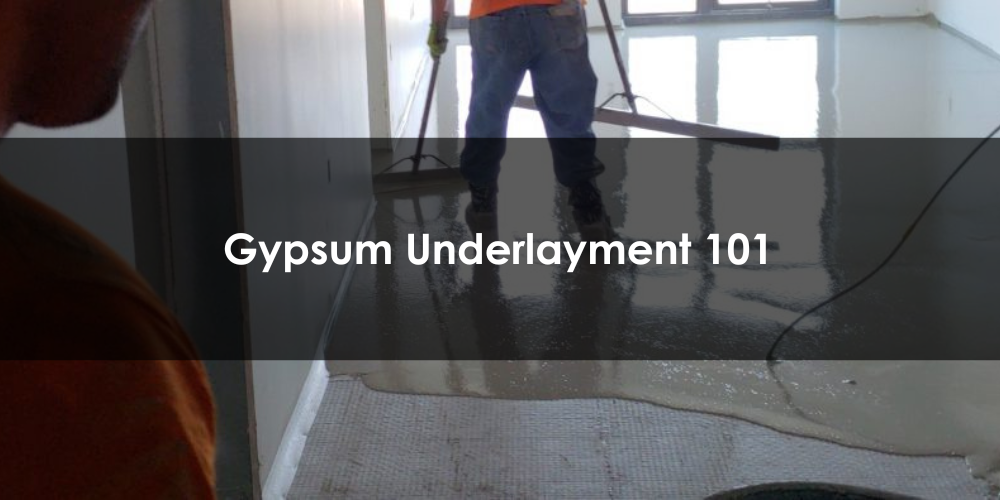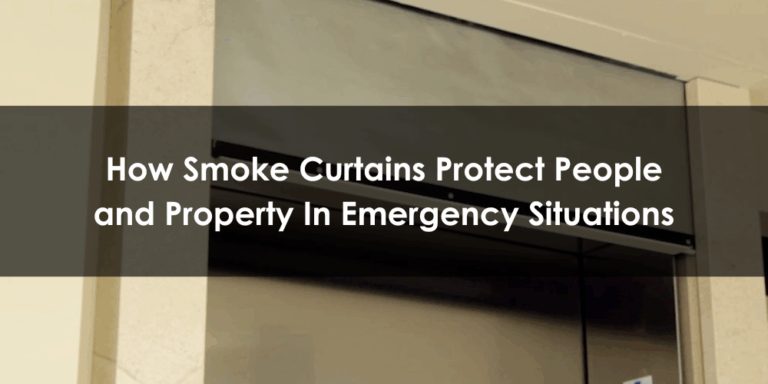
Gypsum underlayment is a construction material made of gypsum powder, Portland cement, and sand. It is commonly used for floor assemblies, including floor leveling, soundproofing, and fire rating applications.
At Nettles, we have decades of experience with gypsum underlayment. In this buyer’s guide, our experts have assembled all the information you may need to know when considering gypsum underlayment for your project.
What is gypsum underlayment made of?
The material is a mixture of gypsum powder, Portland cement, sand, and water. The ratio of ingredients changes based on the specific mix design, which influences the psi of the finished assembly, the dry time, and the flowability.
At Nettles, we batch gypsum underlayment on-site, and our expertise in mix design means that we can achieve extremely precise ratios and results.
What psi can a gypsum underlayment assembly achieve?
Required psi differs based on the type of construction. 2,000-2,500 psi is the acceptable range for most multifamily construction, but different mixes can be created to achieve higher psi specifications.
How is gypsum underlayment installed?
The gypsum underlayment material is mixed and batched onsite, using a pump connected to the building’s water line. Then, long hoses are used to pump the material into the pour location.
How long does it take to dry?
You can walk over a ¾-inch gypsum layer as soon as 2 hours after the pour, although it takes 7-10 days to dry completely and receive finished floor goods. Different gypsum thicknesses and mixes have different dry times, and temperature and humidity can also affect the drying time.
What are common applications of gypsum underlayment?
Fire rating
Gypsum underlayment is a popular and cost-effective choice for floor-ceiling assemblies that require a 1-hour fire rating.
Floor leveling
Gypsum underlayment can be used to level uneven floors. Our team finds the lowest and highest points on the floor and labels the lowest point zero. Then, we create a grid of string across the rest of the floor and measure its distance away from zero, before pouring gypsum underlayment to meet the string. This method is one of the most reliable and cost-effective methods of achieving level flooring.
Sound control
To add sound insulation to a gypsum underlayment floor assembly, we add a sound mat between the plywood and the gypsum layer. Different sound mat depths may be used, depending on the level of sound insulation required. Gypsum underlayment is one of the few proven methods for achieving effective sound control.
Under what conditions can gypsum underlayment be poured?
We can pour gypsum as long as the interior building temperature is at least 50 degrees Fahrenheit. The building must be enclosed with a roof and a structurally sound subfloor. The builder must have one dedicated 20 AMP 115 VA Circuit and a water supply.
What are the benefits of gypsum underlayment?
Gypsum underlayment has a variety of advantages in building construction, including:
- Flowability: Gypsum is highly flowable, with the consistency of a milkshake, and it can be pumped from great distances and into narrow areas.
- Strength: Gypsum achieves a high compressive strength and, depending on the mix design, can be as strong as traditional concrete when cured.
- Fast set time: Gypsum cures enough to walk on mere hours after being installed.
- Minimal surface preparation required: Gypsum saves additional time on the worksite because, unlike traditional concrete, little to no treatment of the surface is necessary before installation.
What factors impact the price?
The cost of gypsum underlayment installation depends on a number of factors, including the distance to the worksite, how many different setups within the building are required, and the volume of the pour.
How long does it take to install?
The Nettles team can pour 15,000-20,000 square feet of ¾-inch gypsum at 2500 psi in one day. That equates to about one and half floors of a medium-sized hotel, or an entire garden-style building.
How to select a gypsum underlayment contractor
Be sure to partner with a gypsum underlayment partner that has deep experience installing gypsum assemblies in your geographic region. Here are a few questions to ask prospective contractors:
- How long have you been in business, and what types of buildings/construction have you worked on?
- How far can you travel for projects?
- What kind of insurance do you have?
- What kind of warranty do you offer?
- Are all your crew members OSHA 10-certified and trained?
- Which gypsum underlayment products do you offer?
- Do you provide all the materials except for water?
- How do you create and maintain a precise and accurate mix design?
- What processes are in place to ensure the project stays on time and on budget?
- How large is your crew and equipment?
- If weight is at a premium in my structure, how can you create an assembly that is both lightweight and achieves the required psi?
- How do you deal with any cracks after pour?
Ready to get started?
If you have additional questions about gypsum underlayment, our expert team would love to help. Contact us today!




